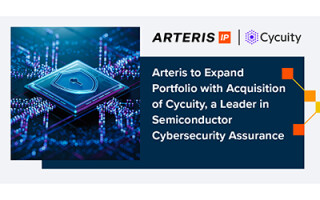Wind River Announces Latest Release of Wind River Studio
July 20, 2021
News

Wind River Studio is a cloud native platform for the development, deployment, operations, and servicing of mission-critical intelligent systems from devices to cloud.
According to the company, Wind River Studio enables improvements in productivity, agility, and time-to-market, with technology integration that includes far edge cloud compute, data analytics, security, 5G, and AI/ML.
The latest release of Wind River Studio includes enhanced automation capabilities to help drive velocity for software teams building connected intelligent systems, such as airborne delivery drones, autonomous vehicles, and factory robots. The platform now offers customizable automation pipelines and integration with automation tools.
New capabilities in Wind River Studio span the four phases of an intelligent system’s lifecycle and include the following:
Development
- A pipeline manager visual tool to define, monitor, and execute complex software automation pipelines enabling continuous integration and continuous delivery of collaborative projects for VxWorks. Per the company, this also includes Wind River Linux, with ability to build each in less than five minutes.
- Digital twin creation and synchronization to model resources, devices, and entire systems in cyberspace for verification and operation with capabilities such as high-fidelity simulation using Wind River Simics, emulation using QEMU, and simulation.
- DevSecOps capabilities enabling modern software development deployable on Amazon Web Services and Microsoft Azure.
Deployment
- A modern cloud platform updated with new 5G vRAN accelerator support and GPU enabled for AI-on-5G and augmented reality application support.
- Application orchestration to deploy, configure, and manage the lifecycle of complex applications onto target devices or cloud infrastructure, spanning private and public cloud environments including Amazon Web Services, Microsoft Azure, Google Cloud, and the Studio cloud platform.
- Automation capabilities for the management and deployment of cloud infrastructure.
- CI/CD and DevSecOps enabling infrastructure as code for deployment and lifecycle management of infrastructure and applications.
Operations
- A digital feedback loop to unlock the value of data from the operating system, application, infrastructure, system or device to increase the ability to make improvements and address problems.
- Analytics powered by the digital feedback loop for real-time analysis, reporting and alerting of infrastructure and application performance, as well as integration with back-end Big Data systems.
- Operations automation to reduce OpEx and enable the operation of complex distributed intelligent systems.
- Infrastructure management capabilities to enable automated day-to-day maintenance of virtualized infrastructure and systems.
Services
- Enablement Services for network setup, configuration, installation, and testing of Studio into Amazon Web Services or Microsoft Azure.
- Acceleration Services providing analysis and migration of legacy workflows to modern DevSecOps, with training and integration of advanced tools.
- Transformation Services providing managed services, security, certification, and machine learning practices, as well as application specific solutions.
- Concierge Services also available for select customers to accelerate onboarding from the Enablement, Acceleration, and Transformation services.
Partner Ecosystem
Integration of industry technologies from ecosystem partners through Wind River Studio Marketplace, including the following:
- Static and Dynamic Analysis from LDRA that automates coding standards compliance, software quality analysis, and source code coverage analysis on the host and target, delivering a single work environment to conduct safety and security critical analysis and verification tasks throughout the DevOps software lifecycle.
- Software Composition Analysis from Revenera to securely manage the use of open source components by providing a complete software bill of materials for more transparency in the software supply chain and continuous monitoring of open source license compliance and vulnerabilities, as well as supporting steps for remediation.
- Coverity static code analysis solution from Synopsys to help development and security teams address security and quality defects early in the software development lifecycle.
For more information, visit: www.windriver.com.





